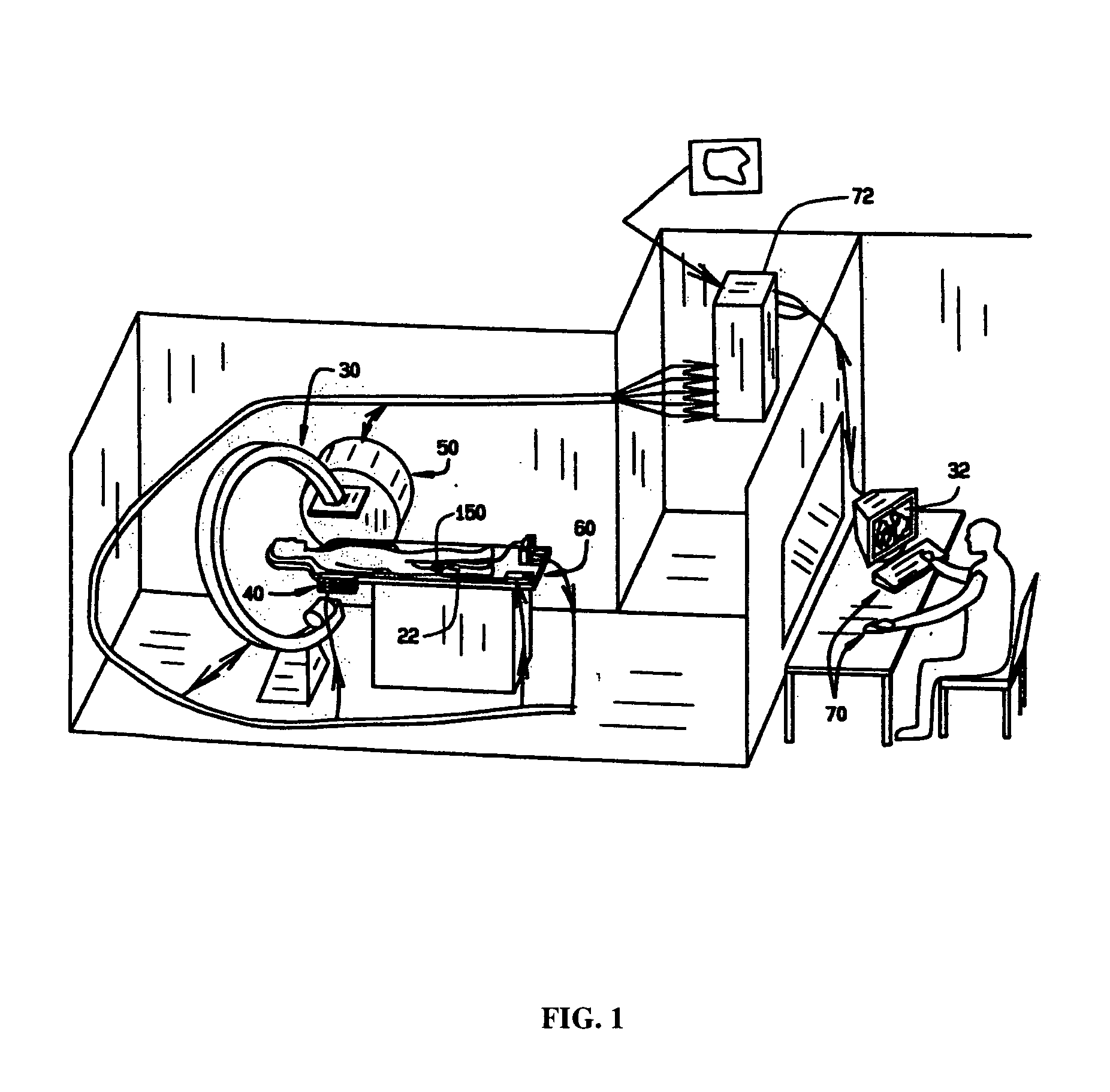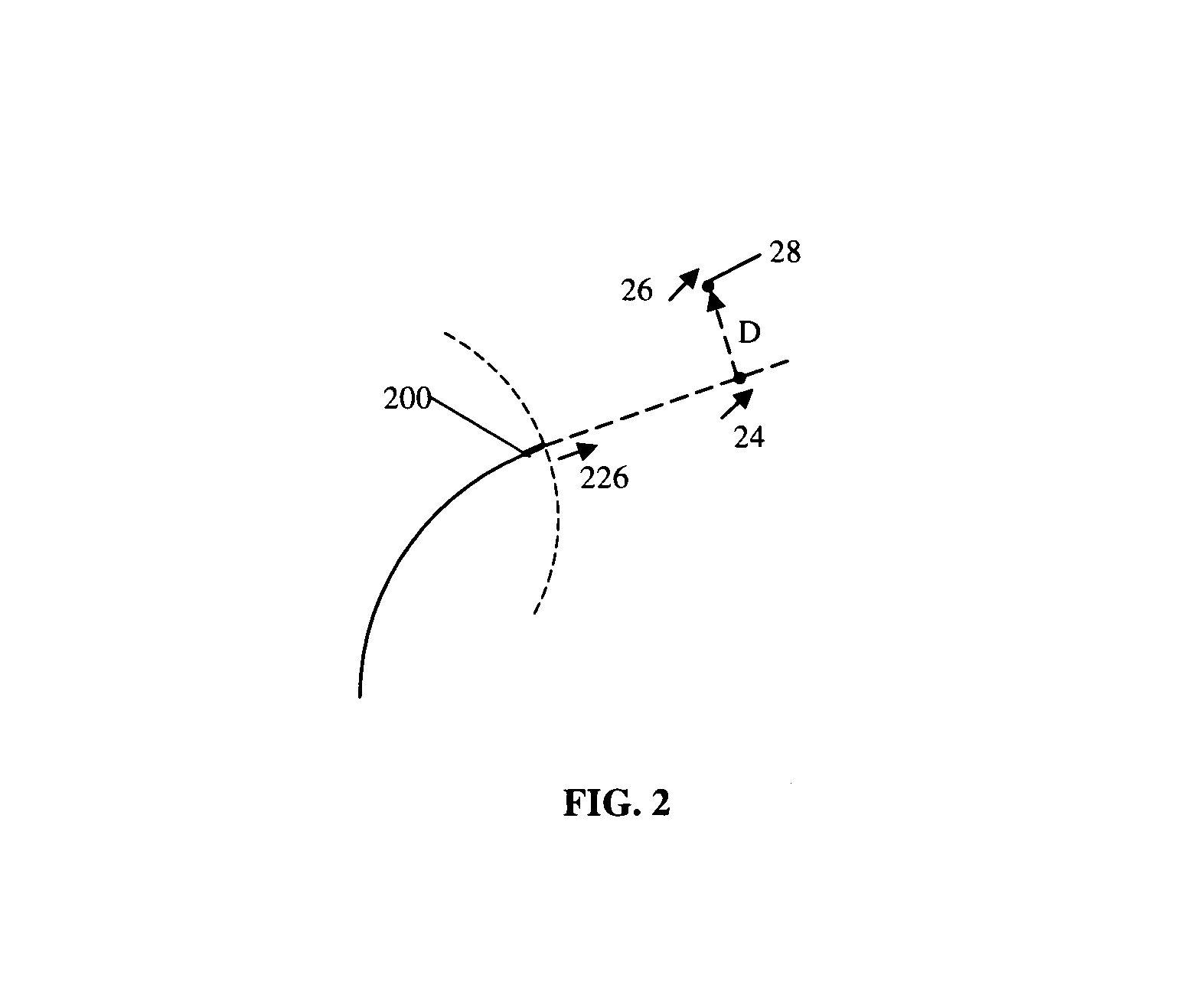Efficient closed loop feedback navigation
a closed loop and feedback technology, applied in the field of interventional medicine, can solve the problem that the device tip may not reach the intended target exactly, and achieve the effect of reducing the damage of surrounding tissu
- Summary
- Abstract
- Description
- Claims
- Application Information
AI Technical Summary
Benefits of technology
Problems solved by technology
Method used
Image
Examples
Embodiment Construction
[0017]An automated system for navigating a medical device through the lumens and cavities in an operating region in a patient in accordance with the principles of this invention is indicated generally as 20 in FIG. 1. The system 20 comprises an elongate medical device 22, having a proximal end and a distal end adapted to be introduced into the operating region in a subject. The system 20 also comprises an imaging system 30 for displaying an image of the operating region on a display 32, including a representation of the distal end of the medical device 22 in the operating region.
[0018]The system also includes a navigation system for manipulating the distal end of the medical device 22. In this preferred embodiment the navigating system is a magnetic navigation system 50. Of course, the navigation system could alternatively be a piezoelectric system or a mechanical guide wire system or other suitable system for orienting the distal tip of the medical device. The magnetic navigation s...
PUM
 Login to View More
Login to View More Abstract
Description
Claims
Application Information
 Login to View More
Login to View More - R&D
- Intellectual Property
- Life Sciences
- Materials
- Tech Scout
- Unparalleled Data Quality
- Higher Quality Content
- 60% Fewer Hallucinations
Browse by: Latest US Patents, China's latest patents, Technical Efficacy Thesaurus, Application Domain, Technology Topic, Popular Technical Reports.
© 2025 PatSnap. All rights reserved.Legal|Privacy policy|Modern Slavery Act Transparency Statement|Sitemap|About US| Contact US: help@patsnap.com



